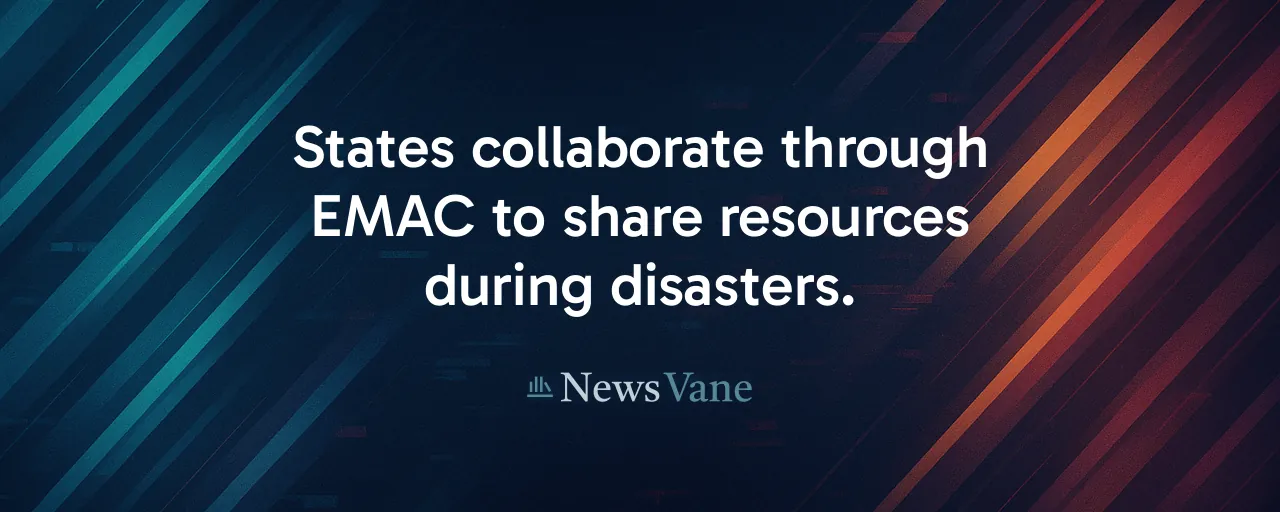A Call for Help Answered
When floods ravaged Kerr County, Texas, the call for help echoed across state lines. New York responded swiftly, deploying four State Police staff and three canines to assist in search efforts. This move, announced on July 9, 2025, highlights a broader system of state collaboration that ensures communities hit by disaster are not left to recover alone. The effort stems from a national framework designed to pool resources and expertise during crises.
The Emergency Management Assistance Compact, known as EMAC, makes this possible. It allows states to share personnel, equipment, and skills while ensuring those who deploy are protected and costs are reimbursed. Every state, along with several territories, has signed on, creating a web of support that activates when disaster strikes. Texas, grappling with loss and destruction, now benefits from this system as New York's team joins the recovery mission.
The Power of Collective Response
Disasters do not respect borders, and neither does the response. EMAC, ratified by Congress in 1996, has grown into a cornerstone of national disaster management. It covers all hazards, from floods to hurricanes, and enables states to lend exactly what is needed, whether that is search dogs or heavy machinery. In 2024, New York sent over 200 staff to aid southeastern states battered by Hurricanes Helene and Milton, showing the system's reach.
This framework thrives on preparation. States train teams for specific roles, like New York's State Police, who are skilled in search and recovery. When Texas requested help, these troopers and their canines were ready to deploy. The system also ensures fairness: sending states are reimbursed, and personnel are covered under consistent legal protections, making it easier to act quickly without bureaucratic delays.
Why Collaboration Matters
No state can handle a major disaster alone. Floods, like those in Texas, demand resources that can overwhelm local capacities. EMAC solves this by creating a national pool of expertise. For example, Florida sent canine search teams to Texas alongside New York's contingent, showing how multiple states can converge to meet a crisis head-on. This approach reduces response times and maximizes impact.
Historical data backs this up. A 2020 FEMA report noted that EMAC deployments cut recovery times by providing specialized skills local governments often lack. After the September 11 attacks, New York itself received aid through early mutual aid systems, a precursor to EMAC. These examples show that collective action is effective and builds resilience across communities, ensuring no one is left behind.
Challenges in Coordination
While EMAC is effective, it is not flawless. Coordinating across states requires clear communication and trust. Differences in training or equipment standards can complicate missions. A 2019 study by the National Response Team found that some deployments faced delays due to mismatched protocols. Ongoing training and annual EMAC exercises help bridge these gaps, ensuring smoother operations.
Another hurdle is resource strain. States like New York, frequently called to help, need to balance their own needs. In 2024, New York managed heat advisories and flood risks at home while aiding other states. Leaders address this by prioritizing preparedness, maintaining robust emergency teams, and relying on EMAC's reimbursement model to avoid overextending budgets.
Building a Stronger System
The Texas deployment reveals both the strengths and areas for growth in mutual aid. Experts suggest enhancing EMAC with better technology, like real-time resource tracking, to speed up deployments. States are also investing in cross-training to align skills, ensuring teams work seamlessly. These steps aim to make an already strong system even more responsive.
Public awareness is another key. Many Americans are unaware of EMAC's role in disasters. Highlighting stories, like New York's aid to Texas, can build support for funding and training programs that keep mutual aid robust. When communities see the system in action, they recognize the value of states working as one.
A Unified Path Ahead
The floods in Texas are a stark reminder of nature's power and of human solidarity. New York's troopers and canines, searching through Kerr County's debris, embody a commitment to help neighbors in crisis. EMAC makes this possible, turning individual state efforts into a national force for recovery.
This system responds to today's disasters and prepares for tomorrow's. By refining coordination, embracing technology, and raising awareness, states can ensure that help arrives faster and more effectively. The work in Texas shows what is possible when collaboration takes center stage.
As recovery continues, the focus remains on people: those searching, those rebuilding, and those finding hope amid loss. State mutual aid proves that no community faces disaster alone. It is a promise kept, from one state to another, that help is always on the way.
